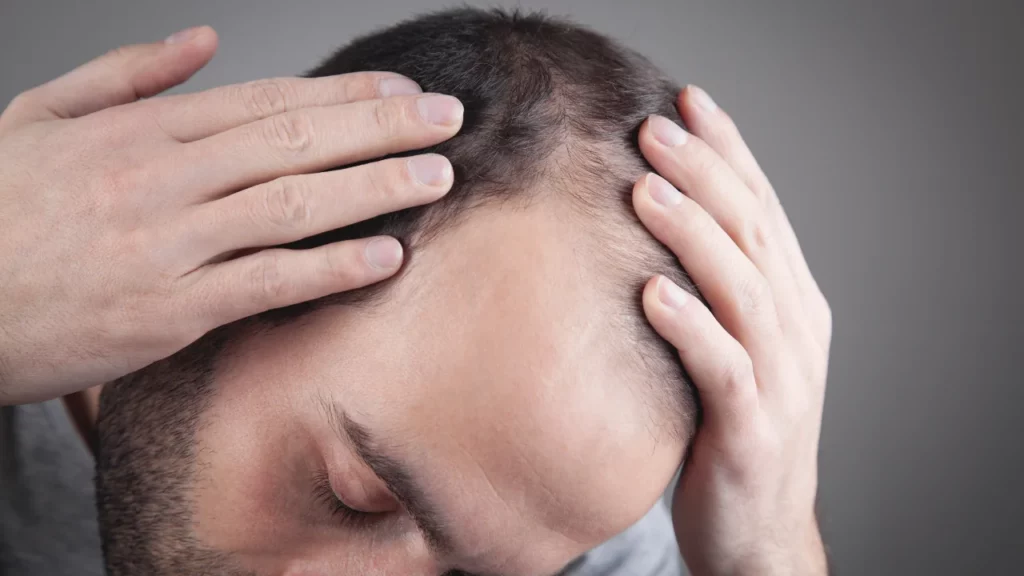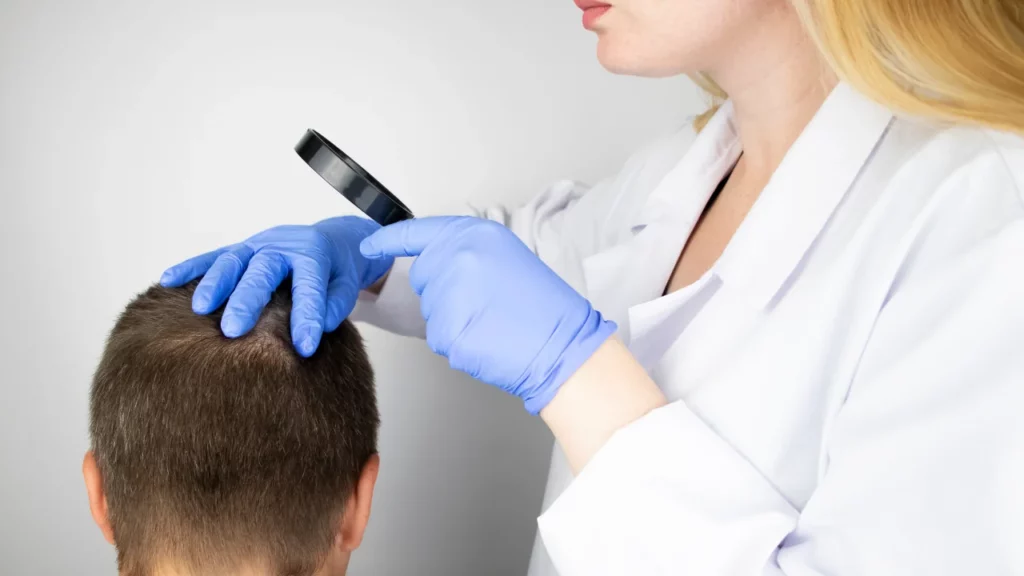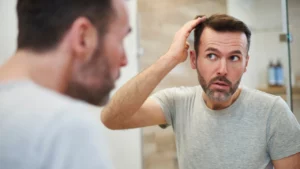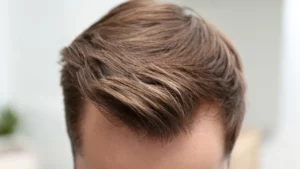Infected hair transplant follicle is not a common problem. Infection is caused by treatment performed in a non-sterile environment or improper aftercare procedures. It is possible for the infection to spread and therefore infection treatment must be started quickly.

Hair transplant infection symptoms are not always noticed quickly. But the sooner you notice it, the better for you. You need to be careful against all problems caused by bacteria or fungi. You must support the process with good maintenance procedures.
Understanding Hair Transplant Infections
Having knowledge about infected hair transplant follicle is important for many reasons. First of all, you develop awareness about the situation. At the same time, you ensure that symptoms are noticeable early. Early detection helps you manage the risk of infection.
It is critical to learn the causes and symptoms of hair transplant infections. For example, 1 week after hair transplant infection is part of your recovery process. However, if you notice the symptoms late, the duration of the problem you are experiencing will be longer.
There is always the risk of hair transplant infection. Being informed about the risks is valuable to understand what you will encounter. If you explore the treatment options along with the risks, you will have fewer problems with infected hair transplant follicle.
It is necessary to distinguish between infections and complications. Infection is caused by microbes that trigger the disease and can be treated with medications. Complications such as botched hair transplant require more comprehensive methods, controls and treatments.
Can Infected Hair Follicles Spread?
Infected hair transplant follicle is a situation that should be taken into consideration. Infection should be kept under control with antibiotics. If the infection is not kept under control, it can spread widely. In rare cases, some bacteria may enter the bloodstream.
Infected hair plugs generally have a local effect. Using oral antibiotics or antibiotic creams may be sufficient to eliminate the infection. When a hair transplant infection popping, attention should be paid to inflammation so that the treatment can be carried out safely.
If hair transplant infection symptoms are not detected early and your immune system is very weak, the infection can quickly spread throughout your body. You may experience different systemic problems. So, you should be careful about infected hair transplant follicle.

How Long Does Infected Hair Follicle Last?
How long an infected hair transplant follicle lasts varies depending on many different factors. To calculate the duration of action, the characteristics of the bacteria causing the infection and how much it affects the tissue should be taken into account.
- If bacterial infection is detected early, its treatment can be completed within 5-7 days. Early diagnosis is very important in case of post hair transplant infection.
- If the infection is more established, local wound care can be performed in addition to oral antibiotics. Under these conditions, the infection takes effect for 2-3 weeks.
- If the infection after hair transplant is caused by fungi, there is a more resistant situation. Surgical intervention may be required and the infection lasts 4-6 weeks.
If the infection has spread too much throughout the body, there is negligence. Even if your body’s defense mechanism continues to fight the infection, you should support it. In this sense, when hair transplant infection popping the next 10-14 days are very valuable.
How to Prevent Hair Transplant Infections?
There is always a risk of hair transplant infection. However, it is possible to stay away from these risks and protect yourself. If you do not want to encounter a hair transplant infection, you should take preventive steps and listen to your surgeon’s recommendations.
- Always try to learn the risk factors for post hair transplant infection. Consider every detail in your treatment, from medical conditions to bad habits.
- You should try to minimize the possibility of risk by researching clinics. Look for clinics that offer hair transplant treatment with high sterilization.
- Extra information is always valuable and can keep you away from infected hair plugs problems. Find out what protocols your treatment site follows for sterilization.
- Be sure to comply with all recommended post-operative care instructions. Take each step seriously, including keeping the treatment area clean.
- To avoid encountering an infected hair transplant follicle, have a healthy lifestyle and try to avoid stress in your life as much as possible.
- Be careful of signs of infected hair transplant follicle. Do not wait for the symptoms to disappear on their own and consult your surgeon as soon as possible.
- Strict adherence to post-operative care guidelines minimizes risk factors. If necessary, you can use antibiotic medications with your doctor’s approval.
Risk of hair transplant infection is always a problem. However, you can avoid this risk by choosing a very good clinic. If you do not want the infection hair transplant follicle problem to be a problem for you, you can come to Turkey and get treatment through health tourism.

Infected Hair Transplant Follicle Signs
If you are concerned about an infected hair transplant follicle, you should pay attention to the first week. You may experience irritations in the first weeks after treatment. If the irritations reach much more serious levels, you are faced with post hair transplant infection.
- Possible Redness: If you are faced with a hair transplant infection, you may experience swelling, redness or other problems in the transplanted area.
- Incision Fluid: Yellow or green fluid coming from the incisions is a sign of infected hair transplant follicle. White liquid should not be a cause for concern.
- High Fever: One of the signs of infected hair transplant follicle is fever. If your temperature is constantly above 38 degrees, it means you have an infection.
- Tender Nodes: You can see tender lymph nodes near the hair transplant area. In case of infected hair plugs, lymph nodes may sometimes swollen.
- Sudden Pains: Infected hair transplant follicle may manifest itself with pain. You may experience more pain 1 week after hair transplant infection.
Signs of infected hair transplant follicle may not be noticed immediately. It is the fever that is noticed most quickly. If your fever continues 1 week after hair transplant infection, you should consult your surgeon as soon as possible and take various steps to protect your skin.
Types of Hair Transplant Infections
Hair transplant infection may cause you to worry about many different issues. When you reach your surgeon, the surgeon can give you information about the types of infections. In case of hair transplant infection popping, you should be aware of these infections.
- Pseudomonas Aeruginosa: It is an extremely opportunistic bacterium and appears when sterilization is neglected in the treatment. It is quite resistant to many antibiotics.
- Escherichia Coli: It occurs when contaminated hair grafts are used during hair transplantation. It can cause various legions to form in the body.
- Staphylococcus Aureus: It is a bacteria commonly found on the skin and considered a natural skin microbe. It occurs in treatments where sterile equipment is not used.
- Cryptococcus Neoformans: It is a fungus that can occur through hair grafts. It generally has a structure that affects the lungs and brain.
- Trichophyton Rubrum: It is a fungus generally seen in ringworm cases. It grows by eating the keratin tissue in the hair and may occur after treatment.
- Candida Albicans: It is a common type of skin fungus that can cause infection. It has a thrush-like structure and it is necessary to use antifungal drugs for treatment.
You should not confuse normal infection with fungal infections. There is a difference between bacterial infection and fungal infection. Because each bacteria has different characteristics and the right medications must be chosen for treatment.
Complications: Botched Hair Transplant
Conditions such as botched hair transplant have a clear association with poor procedures. Infections are situations that can occur in any type of surgery. They significantly increase the risk of treatment failure in hair transplant and cause serious anxiety to patients.
- Chronic Inflammation: If bacteria live in your body for too long, chronic inflammation may occur at the hair transplant area. If an infected hair transplant follicle causes chronic inflammation, symptoms may continue for years.
- Losing Hair: Healthy tissue is severely damaged and abscesses may form as complications. You may unexpectedly lose hair in areas where hair transplantation was not performed. The damage caused by this complication is irreversible.
- Severe Infections: When the infection reaches advanced levels, it spreads deeply into the tissues. It is the most undesirable situation when an infected hair transplant follicle occurs. Even the most powerful antibiotics are not enough to stop the infection.
We cannot talk about zero risk of complications in any procedure. Surgeons who are experts in their field know what to do to avoid complications in hair transplant. They use the most appropriate techniques and keep you away from botched hair transplant problems.

Treatment for Infected Hair Transplant Follicles
Encountering an infection after hair transplant is an extremely stressful situation. First, you should strive to create the best hair transplant infection treatment plan. To do this, you should contact the surgeon who performed your surgery and have the problem diagnosed.
Situations such as infected hair transplant follicle are not encountered very often. If you do not pay attention to your lifestyle in the first few months after surgery, you may experience problems. You should know that bacteria will cause infection and take necessary care.
1. Treatment with Medications
In case of hair transplant infection, your doctor may prescribe various medications based on your hair transplant infection symptoms. Generally, oral antibiotics are used to eliminate infections. The exact course of oral antibiotics depends on your doctor’s choice.
- Amoxicillin: Amoxicillin is a type of antibiotic that fights bacteria. It can be used to treat many different types of inflammation and infections. When using it, you should pay attention to the duration of use recommended by your doctor.
- Doxycycline: Doxycycline is a type of antibiotic with anti-inflammatory properties that can inhibit bacterial growth. It is generally given for tooth and eye infections. However, it is possible to use it in the treatment of infected hair transplant follicle.
- Mupirocin: Mupirocin is a topical antibiotic cream. In addition to the oral antibiotics used, it can be applied to the area of the infected hair transplant follicle. In order for the cream to take effect, it is necessary not to wash the affected area for 48 hours.
When hair transplant infection treatment progresses with medications, you need to visit your doctor again. You can make an appointment within about 10 days and have a re-evaluation. During this process, you must use your medications completely.
2. Surgical Interventions
If oral antibiotics do not produce the appropriate effect, surgical intervention is required. Surgical procedures are minimal and are completed on an outpatient basis. After local anesthesia, tissues are removed from the area where the infection is located.
A biopsy sample can be taken for examination of the bacteria that cause you to have an infected hair transplant follicle. At the same time, antibiotics can be placed in the relevant area as a course. You should continue to use your medications and not skip daily dressings.
3. Care Procedures After Infection Clears
In infected hair transplant follicle conditions, if the infection has been completely cleared, it is important to comply with some care instructions. There is no need to overdo it with maintenance procedures. You just need to keep the treated area clean.
Resting is more important than ever for hair transplant infection treatment. You should continue to do light exercises recommended by your doctor. You should never lift heavy items and avoid strenuous sports. If necessary, you should use vitamin supplements.
To avoid infection after hair transplant, you should get treatment in the right clinic. You may experience infection problems anywhere that does not comply with sterilization standards. If you choose Turkey for health tourism, we can accompany you throughout your treatment.


